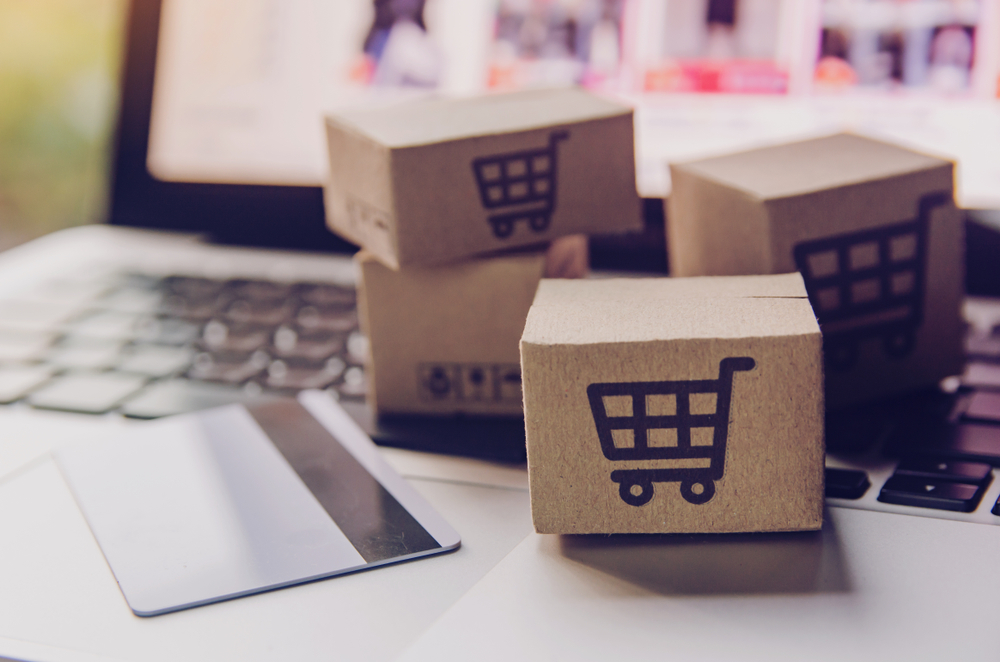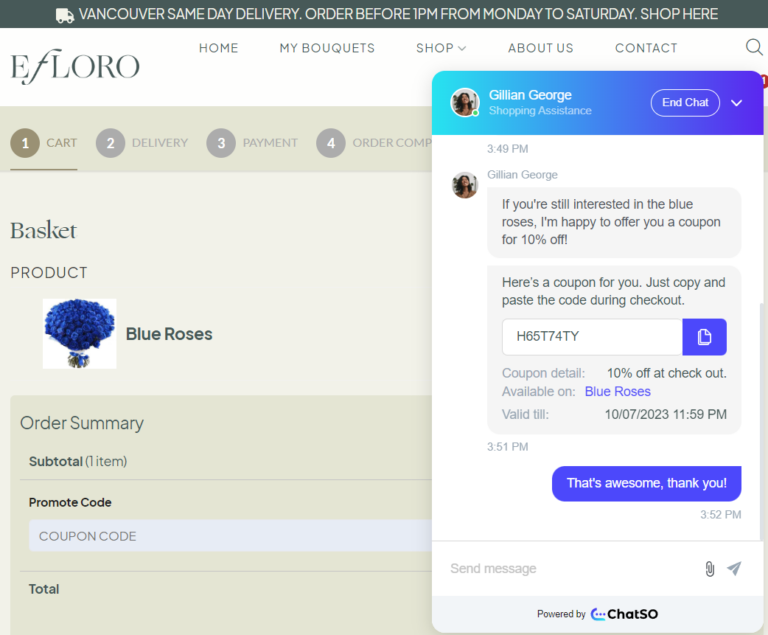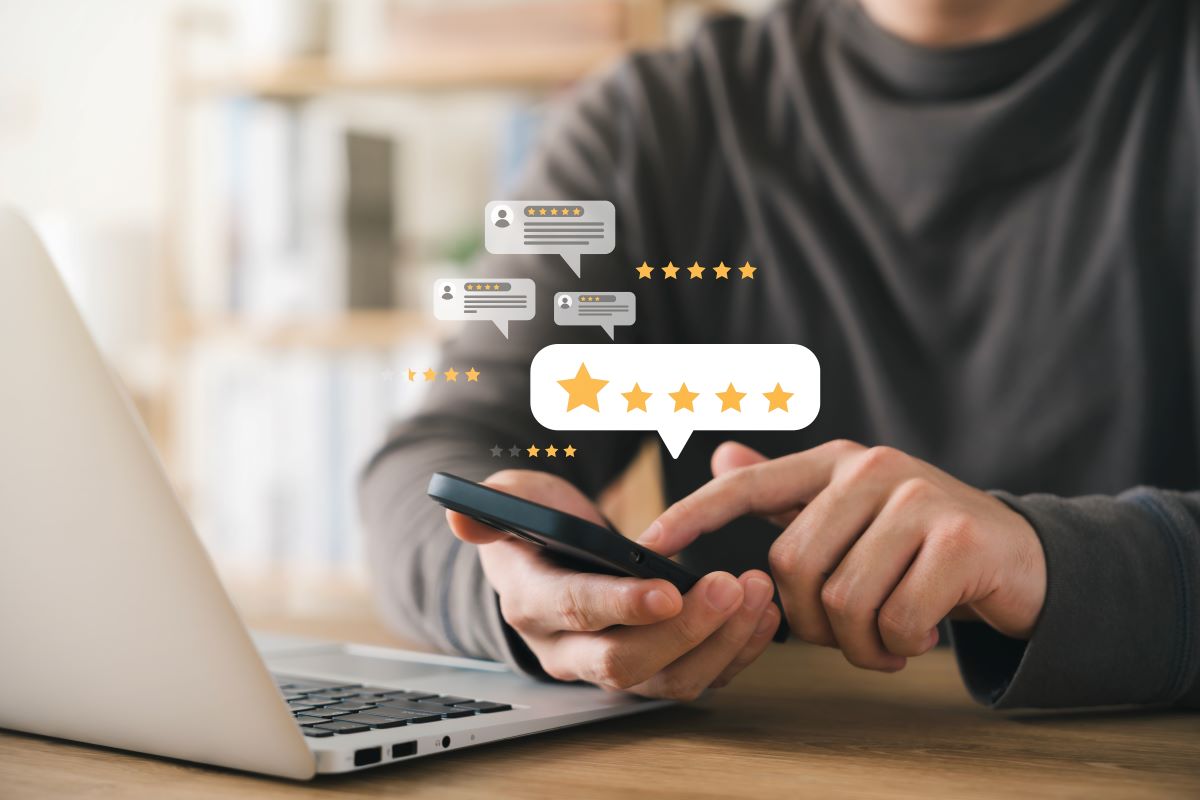Online shopping is all about two things: options and convenience. But aggressive marketing tactics and the rise of mega-retailers has also left many of us feeling oversaturated, mistrustful, and spoiled for choice.
During the recent pandemic, online shopping skyrocketed. To stand out from the crowd, more and more retailers are looking for ways to offer the best of both worlds–the comforts of online shopping combined with the personalized customer service and getting-to-know-you atmosphere of a local brick-and-mortar store.
Personalized customer experiences fit our zeitgeist so perfectly that in just a couple of years, they’ve evolved from a nice-to-have to a basic customer expectation.
In fact, a recent study showed that 75% of customers expect personalized communications, product recommendations, and services from retailers, and 70% feel frustrated when shown recommendations or services they find irrelevant.
As is often the case, it’s wise to pay attention to customer expectations. Personalized customer experiences have been shown to support a number of tangible business benefits. In this article, we’ll take you through three of the major ones, then look at some simple ways to start creating a personalized customer experience.
Boost your sales and revenue
A number of personalization strategies can directly lead to more (or higher-value) sales. One of the most effective is featuring a “recommended products” widget on your website that displays products based on the customer’s past shopping or browsing behaviour.
Recommended products may be upsells or cross-sells. Upsells are products similar to one the customer is interested in or has purchased previously, but at a higher price point. For instance, a customer who regularly purchases pumpkin-flavoured dog treats might be shown a luxury version of that product the next time they arrive at your website.
Cross-sells are complementary products. These might populate at a later point in the customer journey; for example, once a customer has placed an item in their cart. If they’re about to purchase a winter hat, the recommendation engine might show a matching scarf.
By showing customers products and offers that align with their preferences and past behavior, you can guide them towards a purchase while making their shopping experience more enjoyable and convenient.
Retain more customers

It’s no secret that retaining an existing customer is far more cost-effective than converting a new one–in fact, it may be five to seven times cheaper! Offering pleasant, personalized customer experiences is a great way to strengthen your customers’ emotional connection to your brand.
Many personalization tools encourage more interaction more with your website or app throughout the customer journey. For example, personalized product recommendations, content suggestions, wish list tools, and targeted promotions can entice customers to explore your products or services further. The more engaged customers are with your brand, the more likely they are to remain loyal.
Customers also appreciate convenience, and personalization saves them time and effort by reducing the need to sift through irrelevant items. When customers can quickly find what they’re looking for or discover new items of interest, they’re more likely to come back for future purchases.
After a customer makes a purchase, personalization can continue to play a role in retaining them. You can suggest related products, offer loyalty rewards, or ask for product reviews and feedback, all of which contribute to an ongoing relationship with the customer.
Get better results from marketing
Bombarding every customer with emails, ads, and notifications might feel like you’re casting the net wide, but can also be a waste of resources. Your campaigns are unlikely to appeal to all of your customers all the time.
Your customers may grow tired of seeing content that doesn’t resonate with them and begin ignoring you, leading to lower engagement and conversion rates.
Personalization allows you to target your marketing efforts more effectively. Rather than sending generic marketing campaigns to all customers, improve your ROI by focusing on segmenting your audience and tailoring your messages.
Your first step should always be a deep-dive into your customer data. Use your CRM tool to create segmented lists of customers based on various criteria, such as purchase history, browsing behavior, demographics, and preferences. Then, create highly targeted marketing campaigns that resonate with specific customer groups.
Here are just a few examples of how you might personalize your campaigns.
- Content customization – Create content that speaks directly to the interests and needs of different customer segments. This includes tailoring email copy, blog posts, and social media updates to address specific customer concerns and preferences.
- Timing and frequency – By looking at your customers’ engagement patterns, you can figure out the best times to reach out to them and the ideal frequency of communication. For example, loyal customers may enjoy weekly updates, while others may prefer monthly newsletters. Timing messages based on customer behavior and preferences can maximize engagement.
- Behavioral triggers – Design marketing campaigns triggered by specific customer behaviors in real time, at various stages of the customer journey. For instance, if a customer abandons their shopping cart, send a personalized message with incentives or product tips to encourage them to complete the purchase.
- Feedback and improvement – Gather customer feedback across multiple channels, such as personalized surveys and follow-up communication. Customer data can help refine your marketing campaigns and provide a better customer experience over time.
Start offering personalized customer experiences

You don’t need a giant, expensive tech stack to start creating a personalized customer journey. If you’re using ecommerce software, it likely already includes a number of tools and options that can help.
A simple way to start is by encouraging customers to create accounts and wishlists on your website. Not only will this make the customer journey more enjoyable and increase the likelihood of sales; you’ll gain valuable data from logged-in customers which you can use to enhance your personalization efforts in customer service, sales, and marketing.
Offering custom coupons is another great way to build customer relationships. Breadstack’s live chat solution, ChatSO, makes it incredibly easy to do this not just reactively, in response to customer questions, but proactively, too.
For example, customer service agents can view a list of customers who have had items in their cart for more than five minutes. These customers may be hesitant about making a purchase. In just a few clicks, agents can send these customers personal messages offering to help with any questions, recommending upsells or cross-sells, and even throwing in a custom coupon for one or more products.
However you choose to start with personalization, make sure to start simple and track its impact on your sales, customer satisfaction, and marketing metrics.
Finally, remember that personalization is about more than just your bottom line. It can help you find more satisfaction in your business, too. Enjoy learning from your customer data and building an engaging community around your brand!star

